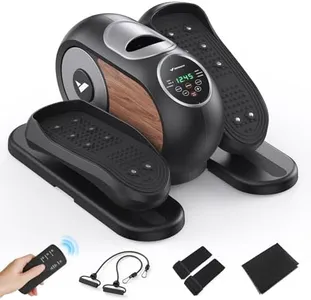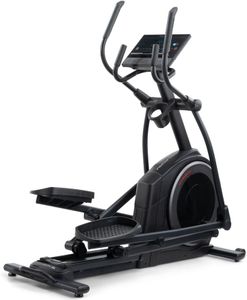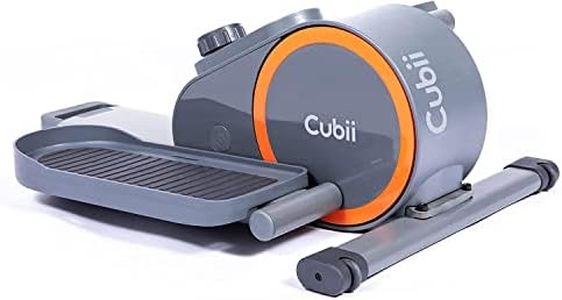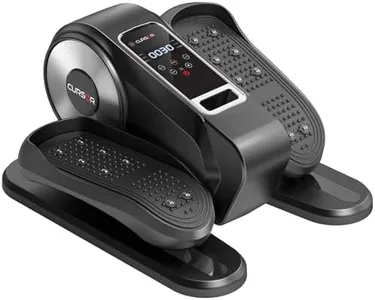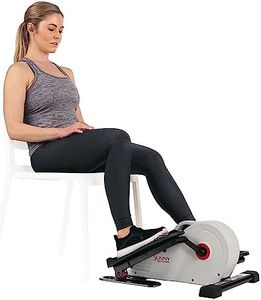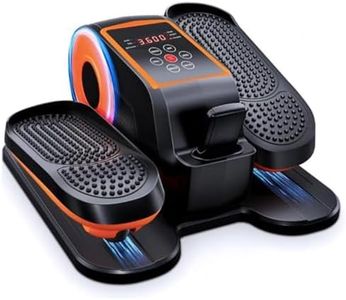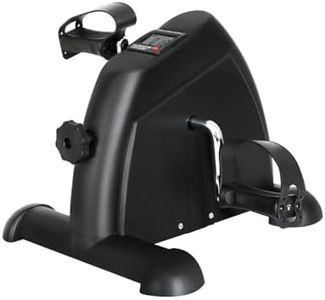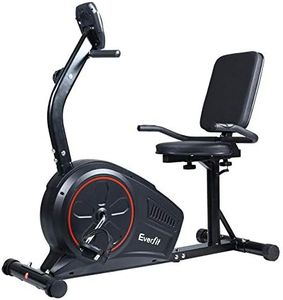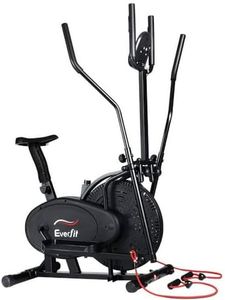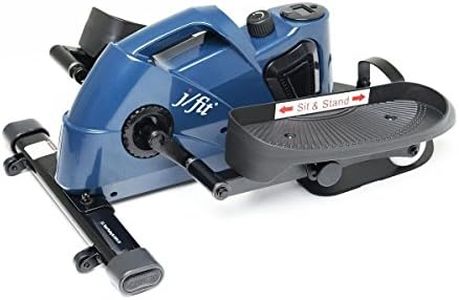We Use CookiesWe use cookies to enhance the security, performance,
functionality and for analytical and promotional activities. By continuing to browse this site you
are agreeing to our privacy policy
10 Best Home Ellipticals
From leading brands and best sellers available on the web.Buying Guide for the Best Home Ellipticals
Choosing the right home elliptical is all about finding a machine that matches your fitness goals, available space, and comfort preferences. Ellipticals are popular for their low-impact workouts that still provide great cardiovascular benefits and can work both upper and lower body. To find the best fit, think about how often you plan to use it, the kind of exercise experience you enjoy, and any special features that might keep you motivated over time.Stride LengthStride length is the distance between the pedals when they are farthest apart. It matters because it influences how natural and comfortable your movement will feel during exercise. Shorter stride lengths (around 14-16 inches) are often suited to smaller users or those with limited space, but can feel restrictive for taller users. Medium (17-19 inches) is the most common and fits most people comfortably. Longer (20 inches or more) is best for taller users or anyone who prefers a more elongated motion. Choose a stride length that allows you to move comfortably without feeling cramped or overstretched.
Resistance LevelsResistance levels determine how hard it is to pedal on the elliptical and allow you to adjust the workout intensity. Fewer resistance levels (under 10) limit your ability to gradually increase difficulty, while more levels (16 or more) offer finer adjustments and greater challenge as you get fitter. Your choice should reflect how much you want to vary your workouts—if you like to mix things up or progress over time, opt for a machine with more resistance settings.
Flywheel WeightThe flywheel's weight impacts how smooth and quiet your workout feels; it is the component that helps create the resistance and flow of motion. Lighter flywheels (under 15 pounds) can result in jerky or unsteady pedal movement, while heavier flywheels (15-25 pounds or more) usually provide a smoother and quieter ride. If you value a more gym-like feel and quieter operation, look for a heavier flywheel. Lighter options can be okay if smoothness is less important or if portability matters more.
Footprint and PortabilityThis refers to the space the elliptical takes up and how easy it is to move or store. Compacter models take up less space, making them ideal for small homes or apartments, but may compromise on stride length or stability. Larger models feel sturdier and offer a more comfortable stride, but require more room. Some machines have wheels or folding features for easier storage. Consider your available space and whether you need to move the machine often.
Preset Programs and ConnectivityPreset programs are built-in workout routines that vary speed and resistance automatically, adding variety and guidance to your exercise. Machines with many preset options can help keep things interesting and motivate you. Connectivity features (like Bluetooth or app compatibility) can allow you to track workouts or connect with fitness apps/devices. Pick a model with enough preset programs if you like variety, and look for connectivity options if you want to sync your workouts or use fitness apps for extra motivation.
Incline AdjustmentIncline adjustment changes the slope of your workout, letting you target different muscle groups and increase the challenge. Some ellipticals have manual or electronic incline settings, while others don't offer this feature. If you want more ways to challenge yourself or mimic uphill walking/running, choose a model with incline adjustment. If you prefer straightforward workouts without extra adjustments, this may not be necessary.
Weight Capacity and Build QualityThe weight capacity tells you how much user weight the machine can safely support. Higher capacity (300 lbs or more) typically means a sturdier, more durable elliptical, which can be important if you’re heavier or want a stable feeling during workouts. Build quality also includes aspects like frame material and overall sturdiness. Aim for a machine with a weight limit well above your own weight for longevity and safety.
